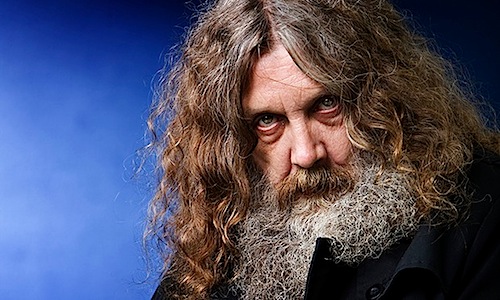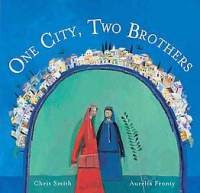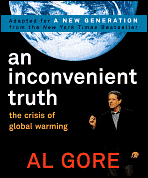On Sixty Minutes, when filmmaker Nate Parker was asked if Birth of a Nation was historically accurate, he noted, “There’s never been a film that was 100 percent historically accurate. That’s why they say based on a true story and doesn’t say, ‘A true story.’” Hollywood may not be the best place to learn one’s history, but here are ten things that the new movie Birth of a Nation got right about Nat Turner’s revolt:
The post 10 things Birth of a Nation got right about Nat Turner appeared first on OUPblog.
The cover has just been revealed for Jerusalem, Alan Moore's long, long brewing novel about 6000 years in the life of his hometown Northhampton. There's a good reason writing it took so long. it's one million words long, longer than Moby Dick, longer than Lord of the Rings, longer than the Bible. It's TWICE AS LONG as these behemoths. It's Moore' second novel after Voice of The Fire from 1996, and he considers it one of his life's works.
During her second 'revelation', Julian of Norwich has a bewilderingly dark vision of Christ’s face, which she compares with the most celebrated relic in medieval Rome. This was the ‘Vernicle’: the image of Christ’s face miraculously imprinted on a cloth that St Veronica lent Christ to wipe his face on his way to Calvary.
The post Jesus takes a selfie: the Vernicle and Julian of Norwich appeared first on OUPblog.

It’s some 600,000 1 million words long, he’s been working on it for over a decade…and Alan Moore’s epic novel Jerusalem is getting published next year. Knockabout will publish it in the UK while W.W. Norton imprint Liveright will publish it in the US. As described in many interviews, the novel involves Moore’s hometown of Northhampton and is written in many styles:
He has also mentioned the varying styles of each chapter: among them, one modeled after a Samuel Beckett play, another written in “a completely invented sub-Joycean text” and another “somewhat in the style of Dos Passos.” The book will include appearances by John Bunyan and Buffalo Bill.
This isn’t Moore’s first novel—that would be Voice Of The Fire. It should be quite the literary event, however, and it will be interesting to see how a mainstream literary publishing house handles the rollout.
(Photo by Murdo Macleod from The Guardian.)
“Defensive warfare does not consist of waiting idly for things to happen. We must wait only if it brings us visible and decisive advantages. That calm before the storm, when the aggressor is gathering new forces for a great blow, is most dangerous for the defender.”
–Carl von Clausewitz, Principles of War (1812)
For Israel, long beleaguered on many fronts, Iranian nuclear weapons and Palestinian statehood are progressing at approximately the same pace. Although this simultaneous emergence is proceeding without any coordinated intent, the combined security impact on Israel will still be considerable. Indeed, this synergistic impact could quickly become intolerable, but only if the Jewish State insists upon maintaining its current form of “defensive warfare.”
Iran and Palestine are not separate or unrelated hazards to Israel. Rather, they represent intersecting, mutually reinforcing, and potentially existential perils. It follows that Jerusalem must do whatever it can to reduce the expected dangers, synergistically, on both fronts. Operationally, defense must still have its proper place. Among other things, Israel will need to continually enhance its multilayered active defenses. Once facing Iranian nuclear missiles, a core component of the synergistic threat, Israel’s “Arrow” ballistic missile defense system would require a fully 100% reliability of interception.
There is an obvious problem. Any such needed level of reliability would be unattainable. Now, Israeli defense planners must look instead toward conceptualizing and managing long-term deterrence.
Even in the best of all possible strategic environments, establishing stable deterrence will present considerable policy challenges. The intellectual and doctrinal hurdles are substantially numerous and complex; they could quite possibly become rapidly overwhelming. Nonetheless, because of the expectedly synergistic interactions between Iranian nuclear weapons and Palestinian independence, Israel will soon need to update and further refine its overall strategy of deterrence.
Following the defined meaning of synergy, intersecting risks from two seemingly discrete “battle fronts,” or separate theatres of conflict, would actually be greater than the simple sum of their respective parts.
One reason for better understanding this audacious calculation has to do with expected enemy rationality. More precisely, Israel’s leaders will have to accept that certain more-or-less identifiable leaders of prospectively overlapping enemies might not always be able to satisfy usual standards of rational behavior.
With such complex considerations in mind, Israel must plan a deliberate and systematic move beyond the country’s traditionally defensive posture of deliberate nuclear ambiguity. By preparing to shift toward more prudentially selective and partial kinds of nuclear disclosure, Israel might better ensure that its still-rational enemies would remain subject to Israeli nuclear deterrence. Over time, such careful preparations could even prove indispensable.
Israeli planners will also need to understand that the efficacy or credibility of the country’s nuclear deterrence posture could vary inversely with enemy judgments of Israeli nuclear destructiveness. In these circumstances, however ironic, enemy perceptions of a too-large or too-destructive Israeli nuclear deterrent force, or of an Israeli force that is plainly vulnerable to first-strike attacks, could undermine this posture.
Israel’s adversaries, Iran especially, must consistently recognize the Jewish State’s nuclear retaliatory forces as penetration capable. A new state of Palestine would be non-nuclear itself, but could still present an indirect nuclear danger to Israel.
Israel does need to strengthen its assorted active defenses, but Jerusalem must also do everything possible to improve its core deterrence posture. In part, the Israeli task will require a steadily expanding role for advanced cyber-defense and cyber-war.
Above all, Israeli strategic planners should only approach the impending enemy threats from Iran and Palestine as emergently synergistic. Thereafter, it would become apparent that any combined threat from these two sources will be more substantial than the mere arithmetic addition of its two components. Nuanced and inter-penetrating, this prospectively combined threat needs to be assessed more holistically as a complex adversarial unity. Only then could Jerusalem truly understand the full range of existential harms now lying latent in Iran and Palestine.
Armed with such a suitably enhanced understanding, Israel could meaningfully hope to grapple with these unprecedented perils. Operationally, inter alia, this would mean taking much more seriously Carl von Clausewitz’s early warnings on “waiting idly for things to happen.” Interestingly, long before the Prussian military theorist, ancient Chinese strategist Sun-Tzu had observed in The Art of War, “Those who excel at defense bury themselves away below the lowest depths of the earth. Those who excel at offense move from above the greatest heights of Heaven. Thus, they are able to preserve themselves and attain complete victory.”
Unwittingly, Clausewitz and Sun-Tzu have left timely messages for Israel. Facing complex and potentially synergistic enemies in Iran and Palestine, Jerusalem will ultimately need to take appropriate military initiatives toward these foes. More or less audacious, depending upon what area strategic developments should dictate, these progressive initiatives may not propel Israel “above the greatest heights of Heaven,” but they could still represent Israel’s very best remaining path to long-term survival.
Headline image credit: Iranian Missile Found in Hands of Hezbollah by Israel Defense Forces (IDF). CC BY-NC 2.0 via Flickr.
The post Ominous synergies: Iran’s nuclear weapons and a Palestinian state appeared first on OUPblog.


According to the FB post from his daughter, Leah, Alan Moore has finished the first draft of his long gestating novel. Jerusalem, which he’s been talking about for years and years. It’s billed as the history of a small patch of Moore’ native Northhampton, with characters coming and going from history, as he told the New Statesman:
That we have our lives over and over and over again an infinite number of times and, each time, we are having exactly the same thoughts, saying exactly the same things, doing exactly the same things as we were doing and saying the first time. If it’s even meaningful to talk of a first time.
I thought I’d thought of this idea myself because I was a genius . . . It turns out that the Pythagoreans had some sort of version of a great recurrence. They were basing it upon the idea that when this universe ends, because time is infinite, then there are bound to be other universes and, since those universes are finite, there will eventually be another universe exactly like this one, which I don’t really think holds up scientifically.
Whereas this idea of the dimensionality of our existence, it does hold up. I can’t see a way around it that doesn’t involve completely contradicting one of the main conceptual lynchpins of modern physics and, halfway throughJerusalem, I came across this beautiful quote from Albert Einstein that completely summed up everything that I was trying to say but very eloquently and at a lot shorter length than three quarters of a million words.
As described, the book sounds a lit like Bryan Talbot’s Alice in Sunderland , which also took a kaleidoscopic look at a British home town, and also Richard Maguire’s Here, a comic which similarly looks at a single location through time. It also recalls the themes of the great abandoned Moore opus, Big Numbers, which remains his only attempt at a story set among vaguely normal humans, although fractal theory was set to upset that apple cart.
, which also took a kaleidoscopic look at a British home town, and also Richard Maguire’s Here, a comic which similarly looks at a single location through time. It also recalls the themes of the great abandoned Moore opus, Big Numbers, which remains his only attempt at a story set among vaguely normal humans, although fractal theory was set to upset that apple cart.
Some more dispatches from the past:
In 2013 he told the Guardian:
“I am currently on the last official chapter, which I am doing somewhat in the style of Dos Passos. It should be finished by the end of the year or close to it. I don’t know if anyone else will like it at all,” he muses. I say that I can’t wait, and that it strikes me that the style he and the likes of Iain Sinclair and Michael Moorcock pioneered has become central to literary culture. He sighs, shaking the walls: “Oh God, have we? Oh no, we’re the mainstream!”
And he told The Beat:
I’ve done a chapter that’s like a mid-sixties New Wave, New Worlds Michael Moorcock-era science fiction story. There’s one that’s like a piece of noir fiction. It’s all these different styles, so I was getting to chapter 33, I know what I’m going to be doing in chapter 34 and chapter 35, but chapter 33, I thought, how shall I handle this? And I was thinking of all these different ways that I could do it, and none of them really worked. People were suggesting things – they were saying ‘well, could you do it in an epistolatory form?’, you know, as letters. I was saying, nah, that for one thing this third book is all in the present tense, and it wouldn’t really work with the plot that I’ve got for this chapter, and then finally, when I was talking to Steve, I said – when I first thought about this chapter, and was wondering what kind of approach to take to it, the first thing that I thought, and immediately dismissed, was I could do it in verse. And I said, I think the reason I said that I immediately dismissed is because it would far too fucking difficult.
Jerusalem does not yet have a publisher; despite its length given Moore’s stature as a literary figure I imagine it would still fetch an advance, should Moore desire it. Or maybe Top Shelf/Knockabout can have another go at it.
Now, how many years do you think it will take to give the first draft a run through?
No matter how long it takes. Jerusalem will be an event when it finally appears.
4 Stars The Christmas Story Karen Williamson Marie Allen 104 Pages Ages: 3+ Back Cover: The Christmas Story retells simply but memorably the whole story of the first Christmas—from the angel’s wonderful news for Mary to the quest of the wise men. ………………………. The Christmas Story is a four-chapter book for ages three and up, [...]
By Gerald Steinacher
April 11, 1961 marked the beginning of the trial against Adolf Eichmann in Jerusalem. In the course of the trial, the world came face to face with the reality of the Holocaust or what the Nazis called the “final solution of the Jewish problem” – the killing of 6 million people. Newspapers around the world published thousands of articles about Eichmann and his role in the Holocaust. But what none of the international journalists touched upon was probably the most intriguing aspect of Eichmann’s story: the way in which he, the bureaucrat of the Holocaust, managed to escape justice soon after the war and flee to Argentina.
The prominent philosopher Hannah Arendt, who closely followed the trial in Israel, was one of those who wondered why Eichmann’s escape never attracted more international attention. In her famous book Eichmann in Jerusalem she wrote “the trial authorities, for various reasons, had decided not to admit any testimony covering the time after the close of the war.” It seems that there was a conscious effort to restrict the dissemination of information on how Eichmann managed to escape to Argentina. This part of his story was to remain largely a secret, which took historians more than fifty years to uncover.
We now know what the Israeli authorities kept hidden during the Eichmann trial: the involvement of Vatican circles, Western intelligence services, various governments and the International Committee of the Red Cross in the escape of Eichmann and thousands of other Nazis, war criminals, and Holocaust perpetrators. A picture has emerged that raises many uncomfortable questions. It is clear that the agencies involved knew exactly what they were doing, but were able to justify the decisions they made and the actions they took with the Cold War. After all, as the Third Reich lay in ruins, the only enemy left for the Western Powers was the communist Soviet Union. In the eyes of the Catholic Church, communism was a ‘godless, deadly enemy’, even worse than Nazism.
After laying low in Germany for several years, in 1950 Adolf Eichmann decided to immigrate to Argentina. He used a tried route through Italy, where he acquired a new identity as Riccardo Klement, a South Tyrolean from Bolzano, and a travel document from the Red Cross. In Italy he was helped by the Vatican Aid Commission for Refugees, in cooperation with a small group of catholic priests, former SS comrades and some Argentinean officials. The ease with which he reached Argentina was also the result of Western intelligence services, such as the CIA and the German BND, turning a blind eye to where Eichmann was hiding. Research suggests that they knew of his new identity as Riccardo Klement, but ignored the information. But why would the Israeli government be so careful not to reveal any of this during Eichmann’s trial? The true reasons are unclear, but it is possible that Israelis simply did not want to embarrass governments and institutions who were now their allies.
Riccardo Klement’s life on the run came to an abrupt end in May 1960, when he was kidnapped by Israeli government agents just outside of his home in Buenos Aires and taken to Jerusalem: “I, the undersigned, Adolf Eichmann, hereby declare out of my own free will that since now my true identity has been revealed, I see clearly that it is useless to try and escape judgment any longer.” Eichmann had to stand trial and in the process the world came to know the horrible details about the treatment of Jews in Nazi Germany, from their forced emigration to centrally- planned industrialized genocide. But the world had to wait 50 years longer to finally learn the truth about how some of the worst Holocaust perpetrators fled justice and who were the institutions helping them do it.
0 Comments on Eichmann in Jerusalem as of 1/1/1900










 Author:
Author: 


Wow, that’s almost as many words as one of his comics!
What’s the release date??
A million words?? That would be a book to purchase as an E-Book, not as a printed copy.